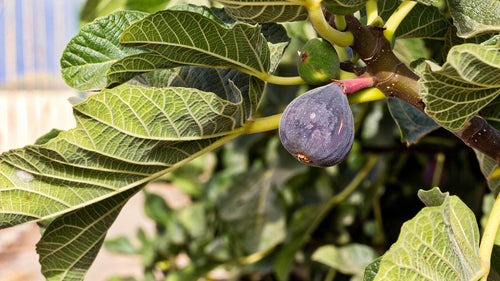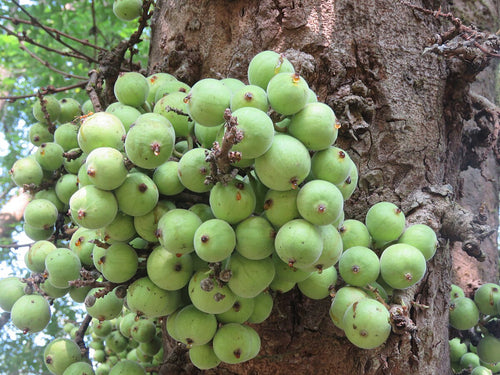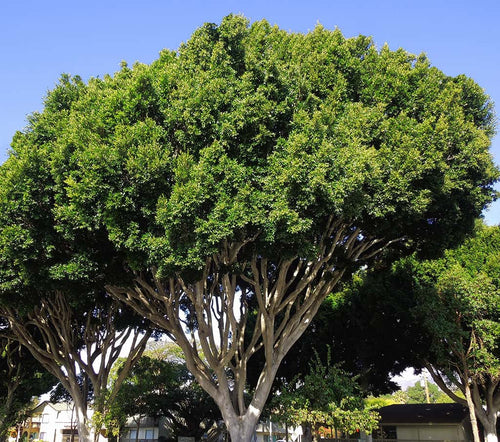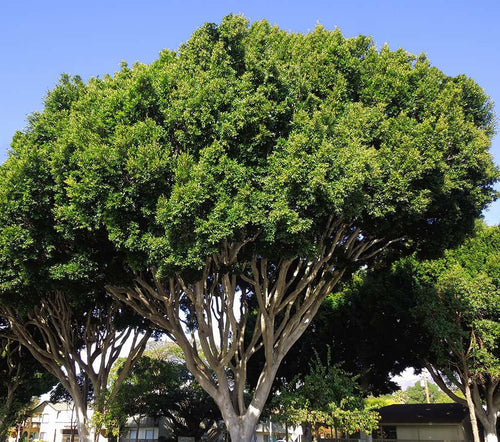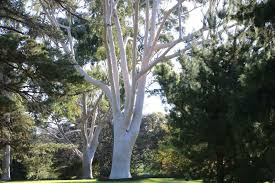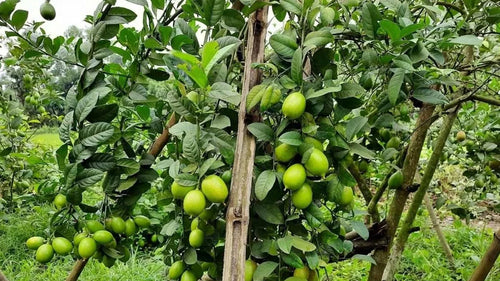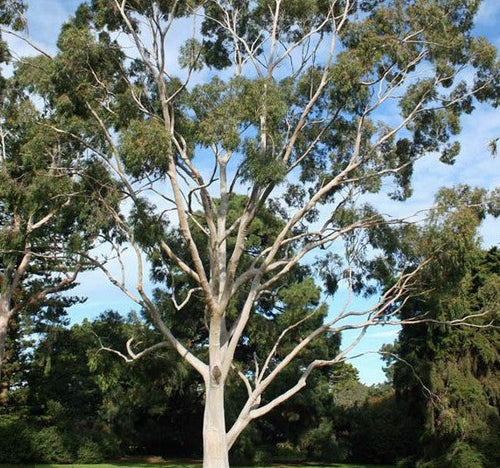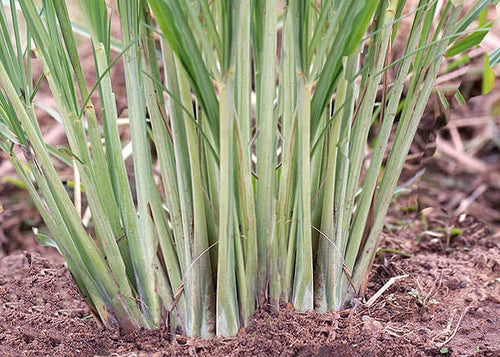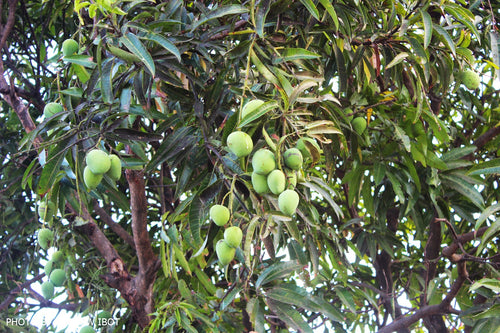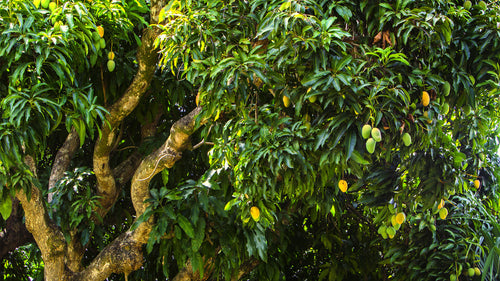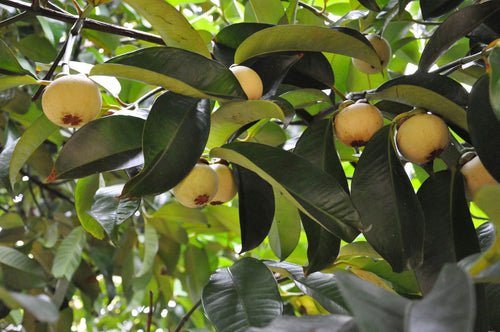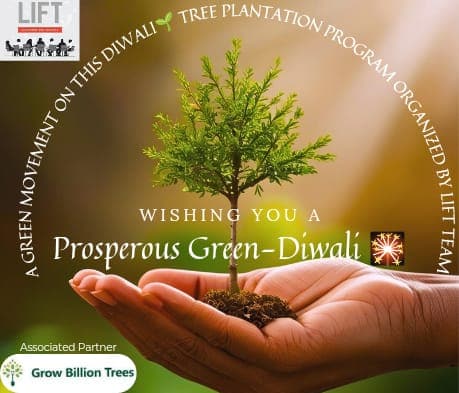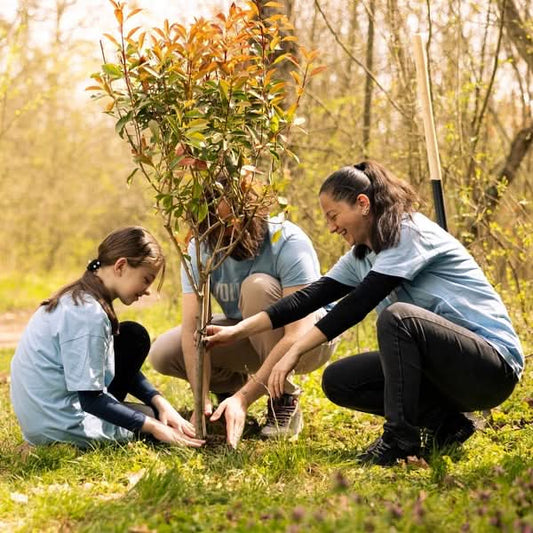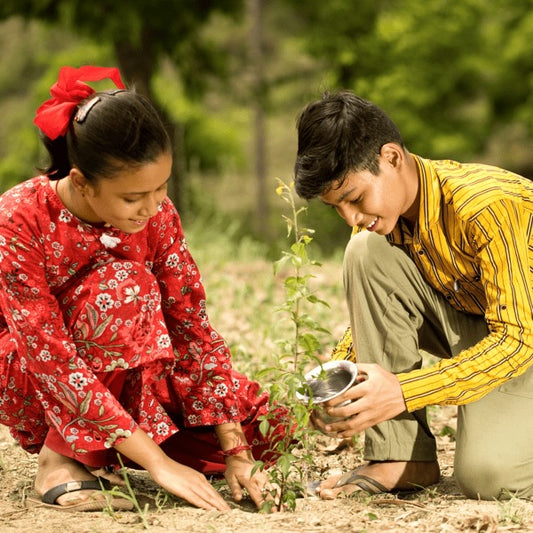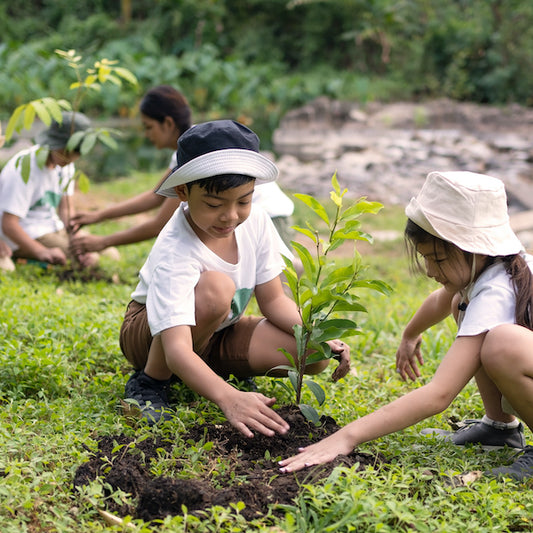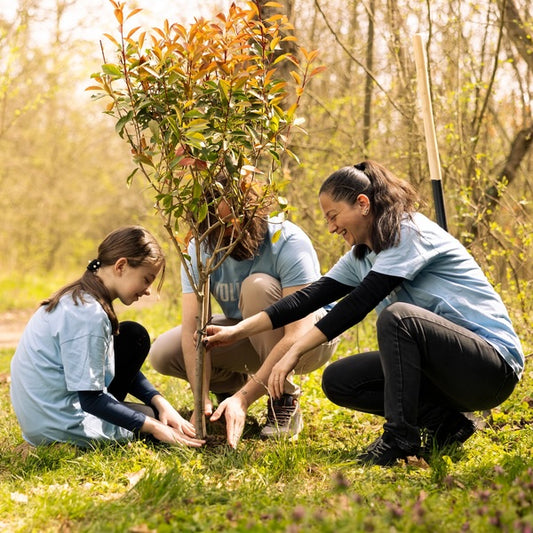CNBC-TV18, EDF, and Climate Collective Unite for Agroforestry at Climate Tech Convening In
At the Climate Tech Convening India 2025, organized by the Environmental Defense Fund (EDF) in collaboration with CNBC-TV18 and Climate Collective, su Read more
Project Update 2


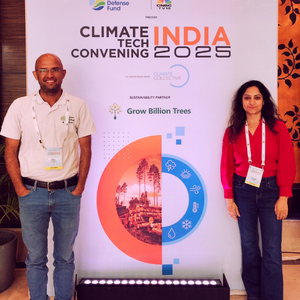
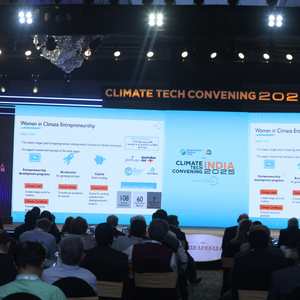

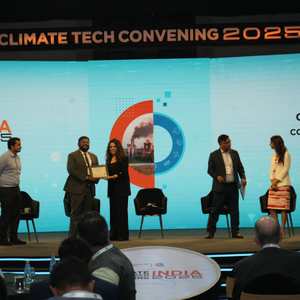


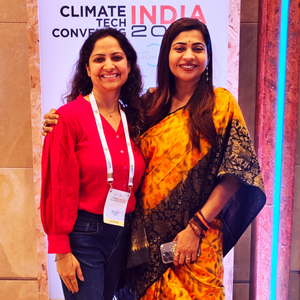


Project Update 1
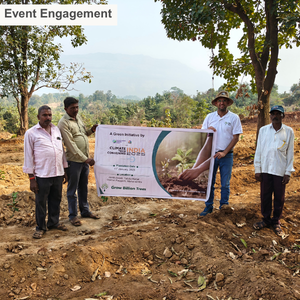
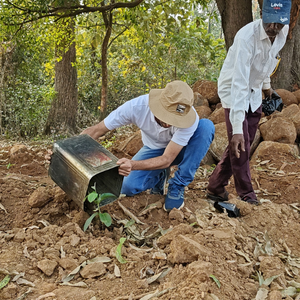
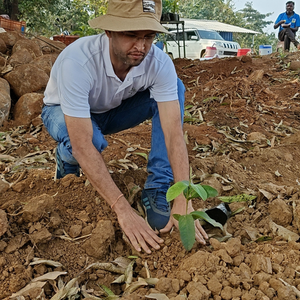
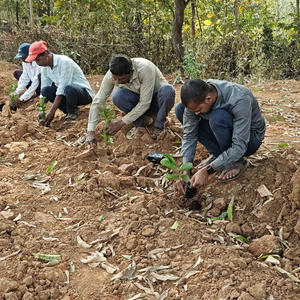
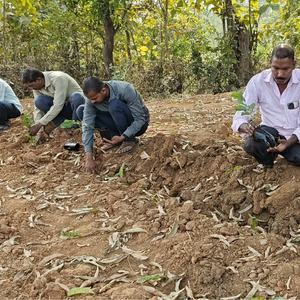
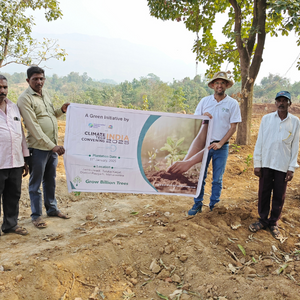
Digital Forest
Forest with 30 Trees planned
Want to plant your tree now?
Plant a Tree @ 299CNBC-TV18, EDF, and Climate Collective Unite for Agroforestry at Climate Tech Convening India 2025
At the Climate Tech Convening India 2025, organized by the Environmental Defense Fund (EDF) in collaboration with CNBC-TV18 and Climate Collective, sustainability was not just discussed it was demonstrated through meaningful action. As part of the event's commitment to creating a lasting environmental impact, saplings were planted in an agroforestry model to honor the speakers and ensure the event’s sustainability.
This thoughtful initiative, executed in partnership with Grow Billion Trees, not only offset the event's carbon footprint but also contributed to India's net-zero emissions goal by 2070. By integrating trees into agricultural systems, the agroforestry model benefits both the environment and rural farmers. It enhances biodiversity, improves soil health, and provides farmers with additional income sources from the produce generated by these trees.
Through this gesture, the Climate Tech Convening India 2025 has set a powerful example of combining gratitude with environmental stewardship, reinforcing the role of collective action in driving India toward a greener, more sustainable future.
Tree Plantation Date
11th January 2025
Plantation Location
Jambulwadi, Taluka Karjat, District Raigad, MH 410201
Trees Planted
Total Count: 30 Trees
Species Name: Mango, Custard Apple, Pomegranate, Lemon, Fig
Forest Type: Agroforest
The CNBC-TV18’s tree plantation initiative, set within the agroforest concept, aims to plant 30 trees, each symbolizing one of the 30 speakers attending the event. Agroforestry, which integrates trees with crops, creates a sustainable and mutually beneficial farming ecosystem, offering numerous environmental and economic benefits. The trees will improve soil health, reduce erosion, enhance water retention, and stabilize the soil with deep roots. For farmers, agroforestry provides income diversification through products like timber, fruits, and nuts, alongside traditional crops, reducing financial risk. Additionally, trees serve as windbreaks, protect crops from extreme weather, and enhance soil fertility by fixing nitrogen, minimizing the need for synthetic fertilizers. The shaded environment also promotes a favorable microclimate, improving crop yields. This initiative not only contributes to environmental sustainability but also empowers farmers by promoting a resilient and diversified farming model, addressing climate change while providing long-term benefits to the land and the community.
Advantages Of Agroforest
Enhanced Income Diversification
Agroforestry enables farmers to diversify their income streams by integrating trees alongside traditional crops or livestock. Trees provide a range of products such as timber, fruits, nuts, medicinal plants, and more. This diversification reduces the financial dependency on a single crop, allowing farmers to generate additional revenue from different sources. The ability to sell tree-based products in addition to crops can buffer against market fluctuations and improve financial stability for farmers.
Improved Livelihood Resilience
By incorporating agroforestry into their farming practices, farmers become more resilient to climate-related challenges and market uncertainties. Agroforestry offers a more diversified farming model that is better able to withstand fluctuating weather patterns, pests, and diseases. For example, trees act as natural windbreaks, shielding crops from damaging winds and extreme weather conditions, thereby improving overall crop stability and farmers' resilience to environmental challenges.
Reduced Farming Costs
Trees in agroforestry systems contribute to cost reductions in farming. They improve soil fertility by fixing nitrogen, which reduces the need for expensive synthetic fertilizers. Additionally, agroforestry helps retain moisture in the soil, cutting down on irrigation costs. Farmers also benefit from natural pest control and reduced reliance on chemical pesticides as trees can attract beneficial insects, creating a healthier, more sustainable farming environment.
Soil Health Improvement and Erosion Control
The deep-root systems of trees play a vital role in preventing soil erosion by stabilizing the soil and reducing water runoff. This natural protection is essential in maintaining soil fertility and preventing land degradation. Agroforestry helps retain moisture in the soil, making it more drought-resistant, and it enhances the overall quality of the land by providing a healthier, more balanced ecosystem for crops to thrive.
Microclimate Regulation
The trees planted as part of agroforestry systems create a more favorable microclimate for crops. By providing shade, trees can reduce temperature extremes, protect crops from sun damage, and help maintain optimal growing conditions for various crops. This shaded environment improves the overall health of the crops, leading to higher yields and better quality produce. It also helps in conserving water by reducing evaporation rates.
Long-Term Environmental Sustainability
Agroforestry practices contribute to carbon sequestration, helping to mitigate climate change by capturing carbon dioxide from the atmosphere. Trees play an essential role in enhancing biodiversity and providing habitat for various species, further promoting ecological balance. By adopting agroforestry, farmers can actively contribute to environmental sustainability while benefiting from a more robust and resilient farming system.
Increased Soil Fertility
Trees in agroforestry systems help to enhance soil fertility by fixing nitrogen and returning organic matter to the soil through leaf litter and root decay. This process improves the nutrient content of the soil, ensuring that crops receive adequate nutrients for optimal growth. It reduces the need for chemical fertilizers, lowering farming costs and promoting more sustainable, organic farming practices.
Increased Carbon Sequestration
One of the key environmental advantages of agroforestry is its ability to capture and store carbon dioxide, which helps mitigate the effects of climate change. As trees grow, they absorb carbon from the atmosphere and store it in their biomass, roots, and surrounding soil. This contributes to reducing greenhouse gases in the environment and plays a vital role in global efforts to combat climate change.
Activities During Tree Plantation
During the CNBC-TV18 tree plantation initiative, all the plantation activities are carried out by farmers in alignment with the agroforest concept. The farmers play a crucial role in preparing the land, and planting the appropriate trees alongside crops, ensuring that the integration of trees and agriculture is done in a way that benefits both the environment and the farming community. The farmers focus on creating a balanced agroforestry system where trees not only enhance soil health and prevent erosion but also contribute to biodiversity and carbon sequestration. The initiative promotes sustainable agricultural practices, where the trees help reduce the need for chemical fertilizers, improve water retention, and provide an additional income source through timber, fruits, and other tree-based products. This hands-on approach empowers farmers, promotes environmental stewardship, and creates long-term benefits for both the land and the local communities.
Tree Plantation Purpose
The tree plantation initiative of CNBC-TV18, executed in the agroforest concept, contributes to several Sustainable Development Goals (SDGs) that promote environmental sustainability, community empowerment, and overall well-being. Here are the SDGs achieved through this initiative:
1. SDG 1: No Poverty
The agroforestry model implemented during the tree plantation initiative helps increase income for farmers, providing them with economic opportunities beyond traditional crop cultivation. Through diversified income sources, such as timber, fruits, and other tree-based products, farmers gain better financial security, reducing the risk of poverty. This model empowers rural communities and contributes to alleviating poverty.
2. SDG 2: Zero Hunger
The agroforestry concept improves food security by creating a more resilient farming system. The integration of trees into agricultural practices increases soil fertility, promotes water retention, and enhances crop yields, thus supporting farmers' ability to grow more food. Trees also provide additional sources of nutrition, such as fruits and nuts, which contribute to improved food diversity.
3. SDG 3: Good Health and Well-Being
The environmental benefits of the tree plantation, such as improved air quality and reduced pollution, have direct health benefits for the community. Trees help purify the air, reduce harmful pollutants, and lower the risk of respiratory diseases, contributing to better public health. Additionally, a healthier environment promotes mental well-being, as exposure to green spaces has been shown to reduce stress and improve overall health.
4. SDG 6: Clean Water and Sanitation
Trees planted in an agroforest system help improve water retention in the soil, reducing the need for irrigation and promoting sustainable water use. The trees also play a role in reducing water runoff and preventing water pollution. This ensures better water management in farming systems, contributing to the conservation of clean water resources and promoting sustainable water practices.
5. SDG 8: Decent Work and Economic Growth
By supporting the farmers involved in the tree plantation initiative, the event helps foster economic growth within local communities. Agroforestry offers farmers additional income sources, such as timber, fruits, and nuts, diversifying their revenue streams. This economic diversification provides more stability and better livelihoods, particularly in rural areas, contributing to SDG 8.
6. SDG 12: Responsible Consumption and Production
By promoting sustainable agricultural practices, including agroforestry, the tree plantation initiative encourages responsible land use. It reduces dependency on synthetic fertilizers and pesticides, lowering the environmental impact of traditional farming. The initiative fosters the production of food and products in an environmentally responsible manner, aligning with the principles of SDG 12.
7. SDG 13: Climate Action
The tree plantation directly contributes to combating climate change by sequestering carbon dioxide, a greenhouse gas, and reducing the overall carbon footprint of the event. Trees absorb carbon as they grow, mitigating the effects of climate change. By planting 30 trees, the initiative plays a part in global efforts to reduce carbon emissions and foster a sustainable environment, contributing to SDG 13.
8. SDG 15: Life on Land
The agroforest approach enhances biodiversity by creating a healthier ecosystem where trees and crops coexist. This approach promotes the restoration of degraded land, supports soil health, and helps prevent soil erosion. By planting trees, the initiative directly supports the protection and restoration of ecosystems, contributing to the health and sustainability of land-based resources.
9. SDG 17: Partnerships for the Goals
The partnership between CNBC-TV18 and Grow Billion Trees has played a pivotal role in achieving SDG 17: Partnerships for the Goals. By collaborating on the tree plantation initiative, both organizations have combined their resources and expertise to create a meaningful environmental impact, aligning with global efforts to combat climate change and promote sustainability. Grow Billion Trees’ focus on large-scale tree planting aligns with CNBC's commitment to advancing climate tech solutions and fostering environmental stewardship. This partnership not only amplifies the reach of their environmental initiatives but also exemplifies the power of collaboration in addressing pressing global challenges. Through this alliance, they have fostered greater awareness, encouraged collective action, and generated long-term environmental and socio-economic benefits for communities, ensuring a more sustainable future for all.
ESGs Achieved Through Agroforestry
Environmental (E)
The tree plantation initiative by CNBC-TV18, executed in the agroforest concept, plays a significant role in promoting environmental sustainability. Through the planting of 30 trees, the initiative contributes to carbon sequestration, reducing the levels of carbon dioxide in the atmosphere and helping mitigate climate change. The integration of trees into agricultural practices improves soil health, enhances water retention, prevents soil erosion, and fosters biodiversity. Additionally, the initiative supports the creation of a greener ecosystem by planting trees that provide habitats for wildlife, further improving environmental resilience. This agroforestry approach not only enhances the land's natural resources but also promotes a circular and sustainable approach to farming, minimizing the ecological footprint of agricultural practices.
Social (S)
The social impact of this tree plantation initiative is profound, particularly in empowering local farming communities. By involving farmers in the plantation process, the initiative offers them a platform to engage in sustainable agricultural practices that contribute to long-term food security and economic resilience. The agroforest concept provides farmers with additional income opportunities through timber, fruits, nuts, and other tree-based products, helping to diversify their income and improve livelihoods. Furthermore, the initiative fosters community involvement and education, raising awareness about the importance of environmental conservation and sustainable farming practices. This strengthens the social fabric by promoting collaboration between businesses, local communities, and environmental organizations, creating a sense of shared responsibility for the environment.
Governance (G)
The governance aspect of the CNBC-TV18 tree plantation initiative emphasizes transparency, accountability, and the alignment of corporate actions with sustainability goals. By partnering with Grow Billion Trees, a reputable organization focused on large-scale tree planting, CNBC-TV18 ensures that the tree plantation process is carried out in a structured, effective, and ethical manner. The collaboration reflects good governance practices by ensuring that the initiative contributes to measurable environmental goals, such as reducing carbon emissions and promoting biodiversity. Additionally, the partnership exemplifies responsible corporate behavior by prioritizing sustainability in corporate strategies and fostering transparent communication about the impact of the initiative. This reinforces the company's commitment to ethical practices and its role in achieving global sustainability targets.
Summary
The CNBC-TV18 tree plantation initiative, executed in the agroforest concept, is a purposeful event where 30 trees will be planted to represent the 30 speakers participating in the event. This initiative is designed to promote environmental sustainability while symbolizing the collective contribution and collaboration of each speaker toward a meaningful cause. By integrating trees into agricultural landscapes, the agroforestry approach ensures long-term environmental and economic benefits, including improved soil health, water retention, and increased biodiversity. The event not only aims to enhance the local ecosystem but also empowers farming communities, creating a positive impact on both the environment and society. Through this initiative, CNBC-TV18 demonstrates its commitment to sustainable practices and the importance of partnerships for achieving global environmental goals.
Trees for Corporates
Trending
Most Popular
Agroforestry Practices
Agroforestry is like the cool, sustainable cousin of traditional farming, where trees and crops live in harmony. When trees are planted alongside crops, they boost soil health, prevent erosion, and improve water retention. It's a win-win for both the environment and the farmer’s bottom line. In the context of CNBC-TV18’s tree plantation initiative, this approach not only nurtures the land but also fosters biodiversity, helping both local ecosystems and agricultural yields flourish. By integrating trees into farming systems, agroforestry gives farmers the tools they need for resilient, sustainable agriculture. So, whether it's providing shade, fruits, or timber, trees are the silent partners that make a huge impact.
Sustainable Tree Plantation
Sustainable tree plantation isn’t just about putting a sapling in the ground and hoping for the best. It’s about careful planning, smart species selection, and long-term care. The CNBC TV18’s tree plantation initiative exemplifies this by using the agroforest concept, where trees are integrated into farming systems for a continuous benefit to the environment. By focusing on sustainability, this initiative ensures that the trees planted help combat climate change, preserve biodiversity, and enrich the local economy. When trees are planted responsibly, they become more than just a symbol—they’re a commitment to the future.
Biodiversity Boost
Trees in agroforestry systems create a haven for wildlife, improving biodiversity while making farms more resilient. By planting 30 trees, CNBC-TV18 is not just adding greenery; it's creating an ecosystem where both plants and animals thrive. The trees provide habitats, food, and shelter, encouraging pollinators like bees and butterflies to flourish. In the long run, these biodiverse environments improve soil fertility and water retention, making farms more sustainable. It’s not just a green thumb—it’s a green revolution for the planet!
Climate Resilience
When it comes to fighting climate change, trees are the unsung heroes. The agroforest concept takes this a step further by creating a balanced system where trees and crops support each other. With 30 trees planted as part of the CNBC-TV18 initiative, the event symbolizes the powerful role trees play in climate resilience. These trees not only capture carbon dioxide but also protect against extreme weather events by reducing soil erosion and improving water management. It’s nature’s way of saying, “We’ve got this,” helping communities adapt to climate change one tree at a time.
Agroforestry for Farmers
Farmers are the backbone of agroforestry, and they reap the rewards of integrating trees into their land. By participating in the CNBC-TV18’s initiative, farmers can diversify their income, enhance soil fertility, and reduce the costs of chemical fertilizers. The 30 trees planted as part of this event will act as income-generating assets through timber, fruits, and other tree-based products. This not only boosts farmers’ livelihoods but also helps them build resilience against market volatility and environmental changes. It’s a farming revolution—one tree at a time!
Sustainable Agriculture
Sustainable agriculture is all about farming in harmony with nature, and agroforestry is a key player in this. By planting trees alongside crops, farmers can improve their yields, protect their land from erosion, and even reduce water usage. The CNBC-TV18 tree plantation initiative highlights how sustainable practices can be scaled up through the planting of 30 trees. It’s proof that agriculture doesn’t have to harm the planet—it can help heal it. Sustainability in agriculture isn’t a trend; it’s the future, and it’s as green as the trees we plant today.
Carbon Sequestration
When it comes to combating climate change, carbon sequestration is one of the most effective tools in our natural arsenal. Trees naturally absorb carbon dioxide from the atmosphere, and when planted in an agroforest setup, they not only sequester more carbon but also help farmers by improving soil health and water retention. The 30 trees planted during CNBC-TV18’s initiative represent a small but meaningful contribution to reducing carbon emissions and fighting climate change. It’s a perfect example of how small actions can have a global impact—one tree at a time.
Environmental Impact
The environmental impact of tree planting extends far beyond the simple act of putting roots in the ground. The 30 trees planted as part of the CNBC-TV18’s tree plantation initiative symbolize a positive ripple effect that reaches the local ecosystem, the climate, and even the global environment. Trees improve air quality, support biodiversity, and combat soil erosion, all while contributing to climate change mitigation. This initiative is a great reminder that every little green effort counts, and together, these efforts create a much bigger environmental impact.
FAQ
What is the purpose of CNBC-TV18’s tree plantation initiative?
The purpose of our tree plantation initiative is to plant 30 trees, each representing one of the 30 speakers attending the event. This symbolizes both the collaboration and the environmental commitment of all participants. We aim to contribute to environmental sustainability while highlighting the role of agroforestry in combating climate change. This initiative also empowers local farmers and boosts biodiversity, leaving a lasting positive impact on both the community and the environment.
What is agroforestry, and how is it used in this initiative?
Agroforestry is the integration of trees with agricultural practices to improve the land’s productivity, resilience, and biodiversity. In our tree plantation initiative, the trees are planted using the agroforest concept, which not only enriches the soil but also helps improve water retention and prevent erosion. This practice benefits both the environment and farmers, as they can earn from diverse tree products while contributing to climate change mitigation.
How does the CNBC-TV18 tree plantation benefit farmers?
The tree plantation initiative offers several benefits to farmers, such as enhanced income diversification and improved soil health. By incorporating trees into agricultural practices, farmers can earn from timber, fruits, and other tree-based products. This initiative helps reduce farming costs, improve yield resilience, and combat soil erosion, ultimately enhancing the farmer's overall livelihood and adapting to changing climate conditions.
Why is tree planting important for the environment?
Tree planting is crucial for the environment as trees act as carbon sinks, absorbing CO2 from the atmosphere and helping mitigate climate change. They also improve air quality, provide habitats for wildlife, and support biodiversity. Trees prevent soil erosion, enhance water retention, and create healthier ecosystems. Through our tree plantation initiative, we aim to help restore balance to the ecosystem and contribute to environmental sustainability.
How does the agroforest concept help in combating climate change?
The agroforest concept combines agricultural practices with tree planting, which helps in capturing carbon dioxide, a leading greenhouse gas responsible for climate change. Trees in agroforestry systems reduce soil erosion, improve water retention, and increase biodiversity. This makes the land more resilient to extreme weather patterns and helps farmers adapt to climate challenges, contributing to global climate change mitigation efforts.
What are the social impacts of CNBC-TV18’s tree plantation initiative?
Our tree plantation initiative supports social sustainability by empowering local farming communities. By involving farmers in the plantation process, we promote sustainable agricultural practices that improve livelihoods. The initiative also fosters community engagement, raising awareness about environmental conservation and encouraging collective responsibility for the planet. The positive impact extends to improving local ecosystems, contributing to long-term social and economic development.
How does tree plantation in agroforestry help with water management?
In agroforestry, trees play a crucial role in improving water retention in the soil. Their roots help prevent water runoff, promote groundwater recharge, and regulate moisture levels. This ensures that crops receive adequate water even during dry periods, reducing the need for irrigation. In our tree plantation initiative, these benefits are passed on to farmers, helping them manage water resources efficiently, especially in areas affected by drought or irregular rainfall.
What is the significance of involving local farmers in tree plantation?
Involving local farmers in tree plantation ensures that the trees are planted in a way that is beneficial to both the environment and the local community. Farmers play an integral role in maintaining and nurturing the trees, which can help boost their income through diverse agricultural products like timber and fruits. Additionally, this inclusion fosters ownership and responsibility, helping farmers integrate sustainable practices into their daily operations.
How does CNBC-TV18’s tree plantation initiative align with global sustainability goals?
Our initiative aligns with global sustainability goals, particularly the UN's Sustainable Development Goals (SDGs) focused on climate action, life on land, and sustainable agriculture. By promoting tree planting and agroforestry, we contribute to SDG 13 (Climate Action), SDG 15 (Life on Land), and SDG 12 (Responsible Consumption and Production). The initiative plays a crucial part in addressing environmental issues and supporting long-term ecological and economic resilience.
How will the success of the tree plantation initiative be measured?
The success of our tree plantation initiative will be measured through various metrics, including tree survival rates, growth, and contribution to carbon sequestration. Additionally, we will track the positive effects on local farming communities, such as increased income and improved agricultural productivity. By monitoring these outcomes, CNBC-TV18 will ensure that the initiative has a lasting impact on the environment and the community.
- Choosing a selection results in a full page refresh.
- Opens in a new window.



